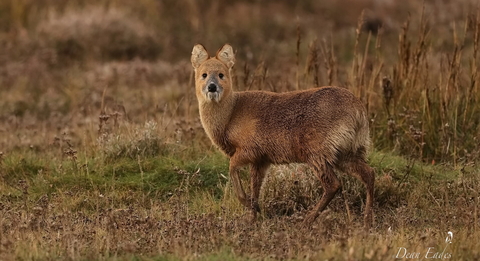While gazing out from Trundle Mere Lookout yesterday, it was great to take in the view of the Living Landscape, and explain to some guests from the University of Cambridge how conservation is benefitting our part of the Fens.
Encouraging scientists, such as students and their tutors, to make use of the facilities at the Great Fen goes back many years before the ‘Living landscape’ concept, including the ‘Big Idea’ that became the Great Fen, was conceived. This is because the National Nature Reserves (NNRs) were not only established (starting in the 1950s) to protect some of our most important habitats, species, and geology, but also to provide ‘outdoor laboratories’ for research.
While walking through Holme Fen National Nature Reserve with Professor Christine Lane and her colleagues from the Department of Geography, we were fortunate enough to have some sunny weather, with the temperature actually rising above freezing.
The plan for that day was the usual busy mix of multi-tasking, including community engagement, site management and monitoring. A variety of conservation management tasks are taking place at the moment, as it is winter, and that morning I was helping my fellow staff members clear the way for some planned ditch management. At the same time, I was waiting for the call from Christine and her team to say they had arrived at the Holme Fen Posts; a useful rendezvous point. The University had used the Great Fen for field trips in the past and, post COVID, this was a good opportunity to catch-up, make new contacts and see what other opportunities there might be to work together.




